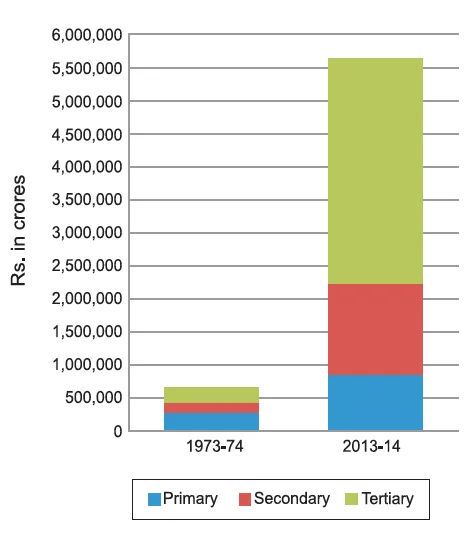![]() 5 Dec 2023
5 Dec 2023
Primary, Secondary And Tertiary Sectors provide insights into the composition and development of the country’s economy. These sectors play a unique role in shaping the nation’s economic landscape. Understanding their status helps gauge the nation’s economic progress and the distribution of its workforce, showing the intricate relationship between sectoral dynamics and overall India’s Economic Development.
These specific years have been chosen for analysis because they offer comparable and authentic data. Figure allows us to observe the growth in total production over forty years, providing a nuanced understanding of India’s Economic Development.

GDP by Primary, Secondary and Tertiary Sectors
Understanding the Shifts in India’s Economic Development, Sectoral Dynamics & GDP:
India’s GDP Evolution (1973 to 2013): The figure displays the percentage share of the three sectors in India’s GDP over a period of forty years, from 1973-74 to 2013-14.

The issue of underemployment in agriculture persists in India, and there are also people who are completely unemployed. Several strategies can be employed to increase employment opportunities,

Gur Making in Haryana
| Do You Know?
In India about 60 per cent of the population belongs to the age group 5-29 years. Out of this, only about 51 per cent are attending educational institutions. |
|---|
|
Additional Information A study conducted by the erstwhile Planning Commission (now known as NITI Aayog) estimates that if tourism as a sector is improved, every year we can give additional employment to more than 35 lakh people. |
|---|
Therefore, a multi-pronged approach is required to increase employment opportunities in India, addressing both short-term and long-term needs.
However, it’s important to note that not all segments of the service sector are growing equally. While some segments are thriving, others struggle to provide a livelihood, often due to limited alternative employment opportunities. Hence, only a part of this sector is growing in importance.
<div class="new-fform">
</div>